
Bowling – History
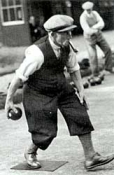 Even though bowling has been the object of satire in such movies as Kingpin and the Big Lebowski, it is certainly a genuine sport. And, believe it or not, it may be one of the oldest sports in the history of the world. Over 100 million people in more than 90 countries practice the game, making it one of the most popular and universally loved forms of recreation on the planet. It has been the game of kings (literally), and the startling facts behind the origins of bowling may surprise even the most dedicated kingpin.
Even though bowling has been the object of satire in such movies as Kingpin and the Big Lebowski, it is certainly a genuine sport. And, believe it or not, it may be one of the oldest sports in the history of the world. Over 100 million people in more than 90 countries practice the game, making it one of the most popular and universally loved forms of recreation on the planet. It has been the game of kings (literally), and the startling facts behind the origins of bowling may surprise even the most dedicated kingpin.
 In the 1930’s, British Anthropologist Sir Flinders Petrie became the first to discover evidence of a bowling-like game. He found ancient objects in a child’s grave in Egypt that were allegedly used for a primitive form of the game. The artifacts have been dated back to 3200 BC, effectively making bowling over 5,000 years old! Although some critics put the birth of bowling much later (German historian William Pehle has said that the game originated in his country in 300 AD), it has certainly endured centuries to settle into the modern lanes that we all know and love today.
In the 1930’s, British Anthropologist Sir Flinders Petrie became the first to discover evidence of a bowling-like game. He found ancient objects in a child’s grave in Egypt that were allegedly used for a primitive form of the game. The artifacts have been dated back to 3200 BC, effectively making bowling over 5,000 years old! Although some critics put the birth of bowling much later (German historian William Pehle has said that the game originated in his country in 300 AD), it has certainly endured centuries to settle into the modern lanes that we all know and love today.
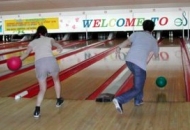 The first written mention of a bowling-like sport can be traced to the year 1366 in England. Allegedly King Edward III outlawed the game in order to keep his troops focused on their archery practice, but it was most certainly in vogue (and legal) during the reign of King Henry VIII. Many variations of bowling have come from Europe including Italian bocce, French pentanque, and even Britain’s lawn bowling, but the question of who introduced bowling to the United States is much more uncertain.
The first written mention of a bowling-like sport can be traced to the year 1366 in England. Allegedly King Edward III outlawed the game in order to keep his troops focused on their archery practice, but it was most certainly in vogue (and legal) during the reign of King Henry VIII. Many variations of bowling have come from Europe including Italian bocce, French pentanque, and even Britain’s lawn bowling, but the question of who introduced bowling to the United States is much more uncertain.
 The English, Dutch, and German settlers all brought their own versions of the game to the New World. The earliest mention of American bowling comes in the form of a quote from Rip Van Winkle when old Rip wakes up to the sounds of “ninepins”. The origin of the tenpin game is still unknown, but by the late 1800’s it was prevalent in New York, Ohio, and Illinois. The first standardization of the rules of the game was established on September 9, 1895 at Beethoven Hall in New York City. It was then that the American Bowling Congress was formed and major national competitions began. The Women’s International Congress came much later in the year 1917 under the encouragement of proprietor Dennis Sweeny. The women leaders participating in a tournament later formed the Woman’s National Bowling Association.
The English, Dutch, and German settlers all brought their own versions of the game to the New World. The earliest mention of American bowling comes in the form of a quote from Rip Van Winkle when old Rip wakes up to the sounds of “ninepins”. The origin of the tenpin game is still unknown, but by the late 1800’s it was prevalent in New York, Ohio, and Illinois. The first standardization of the rules of the game was established on September 9, 1895 at Beethoven Hall in New York City. It was then that the American Bowling Congress was formed and major national competitions began. The Women’s International Congress came much later in the year 1917 under the encouragement of proprietor Dennis Sweeny. The women leaders participating in a tournament later formed the Woman’s National Bowling Association.
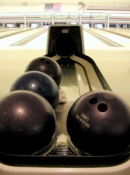 The first Mineralite ball was introduced in 1914 by the Brunswich Corporation, and the first commercial installation of a pin setting machine came in 1952, making “pin boys” almost entirely unnecessary. But nothing did more for the popularity of bowling than the first broadcast of “Championship Bowling” by NBC in the 1950’s. Thanks to this show and many others including “Make that Spare”, “Bowling for Dollars”, and “Celebrity Bowling”, bowling was thrust into the American public’s living rooms and hearts alike. The Pro Bowlers tour became hugely popular on ABC Sports Broadcasting after first being televised in 1961. These events all added to the popularity of Bowling but make no mistake. Bowling is loved in its own right because it is a sport of the people. It has come from its early forms to evolve into a truly enjoyable American past time.
The first Mineralite ball was introduced in 1914 by the Brunswich Corporation, and the first commercial installation of a pin setting machine came in 1952, making “pin boys” almost entirely unnecessary. But nothing did more for the popularity of bowling than the first broadcast of “Championship Bowling” by NBC in the 1950’s. Thanks to this show and many others including “Make that Spare”, “Bowling for Dollars”, and “Celebrity Bowling”, bowling was thrust into the American public’s living rooms and hearts alike. The Pro Bowlers tour became hugely popular on ABC Sports Broadcasting after first being televised in 1961. These events all added to the popularity of Bowling but make no mistake. Bowling is loved in its own right because it is a sport of the people. It has come from its early forms to evolve into a truly enjoyable American past time.
Rules
British Tenpin
CandlePin
USBC Rules
Angle of entry
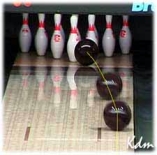 Many years ago someone conducted an experiment to find out what was the best way to strike. To make the results valid and repeatable they set up a ramp and rolled the ball – straight – at the pins. What they found was that the angle at which the ball rolled into the pins was very important: with the optimum angle they could roll strike after strike after strike. The key learning, however, was that this optimum angle of entry could not be created by rolling the ball straight down from the edge of the lane – to create that angle you must use a hook ball delivery.
Many years ago someone conducted an experiment to find out what was the best way to strike. To make the results valid and repeatable they set up a ramp and rolled the ball – straight – at the pins. What they found was that the angle at which the ball rolled into the pins was very important: with the optimum angle they could roll strike after strike after strike. The key learning, however, was that this optimum angle of entry could not be created by rolling the ball straight down from the edge of the lane – to create that angle you must use a hook ball delivery.
To roll a hook ball the bowler must develop a ‘release’, getting the ball off the thumb and using the fingers to put side rotation on the ball. The ball will skid down the lane, through the oil, and the rotation will start to move the ball (“hook”) towards the pins. Because the ball is rolling into the pins it is less likely to suffer as much deflection and more likely to carry the center pins.
Notes
- For spares the straight ball release is ideal, keep it simple & less chance of hooking away off target
- If the condition is such that the hook style is too unpredictable revert to the straight ball
- The Helicopter shot actually uses deflection and spin to mix the pins up
- A perfect hook ball only hits four pins! It hits the pocket (1-3 pins for a right-hander) and rolls through to hit the 5-pin then deflect into the 9-pin. All other pins are knocked over by other pins moving off the ball and into them.
Misc
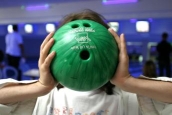 In bowling there is the turkey; three strikes in a row
In bowling there is the turkey; three strikes in a row- There are three holes in a bowling ball
- A perfect 300 game in bowling is 12 strikes in a row (where the tenth frame has three possible throws of strikes)






























